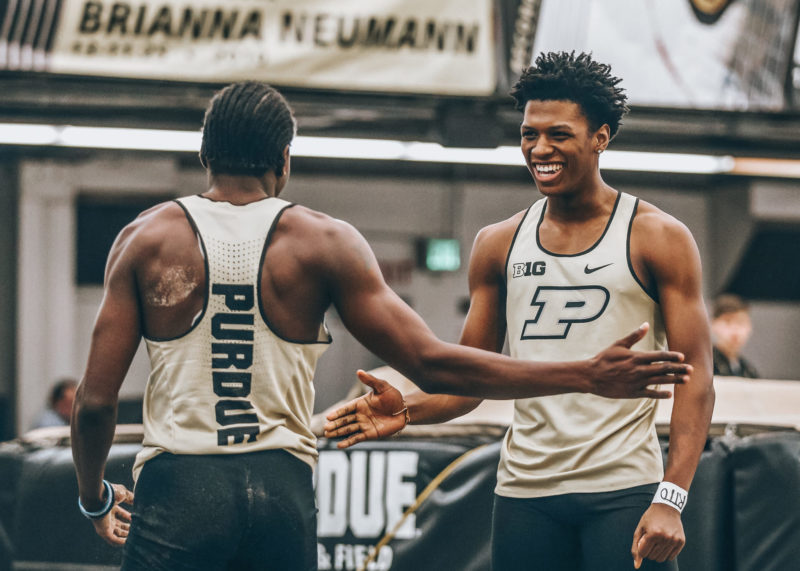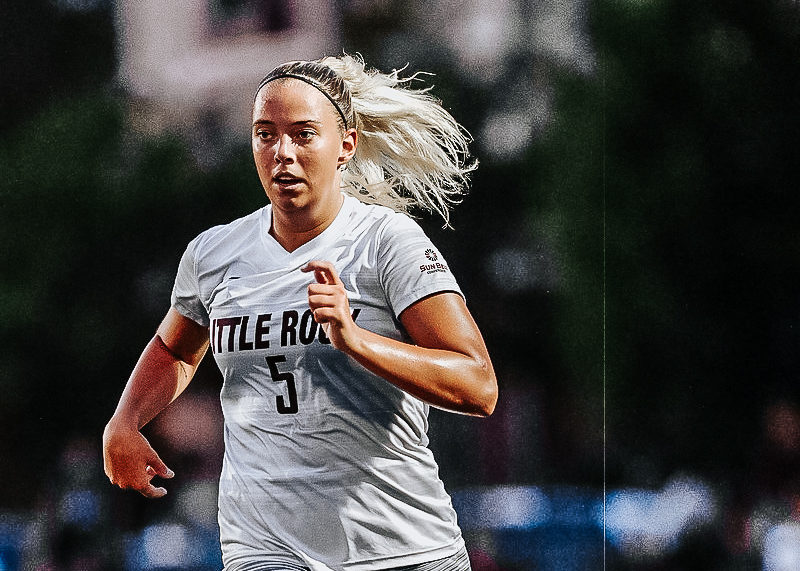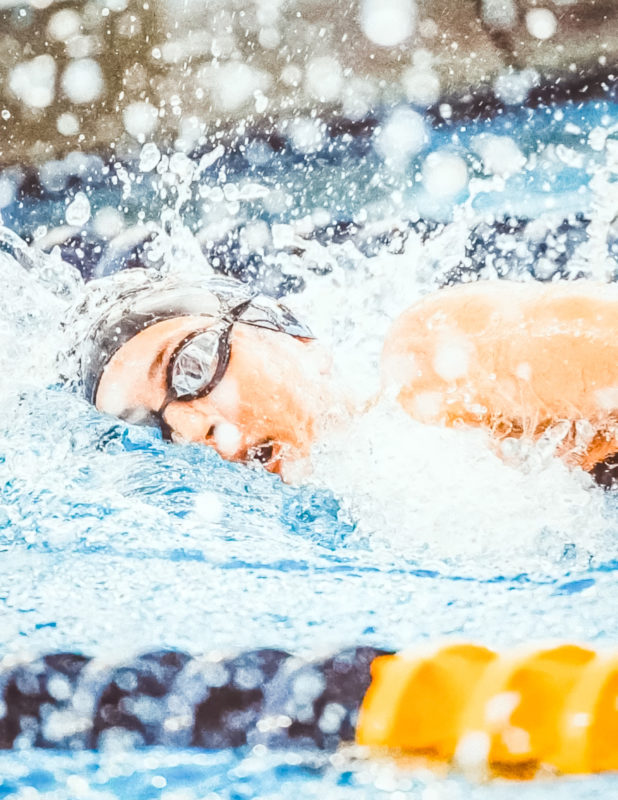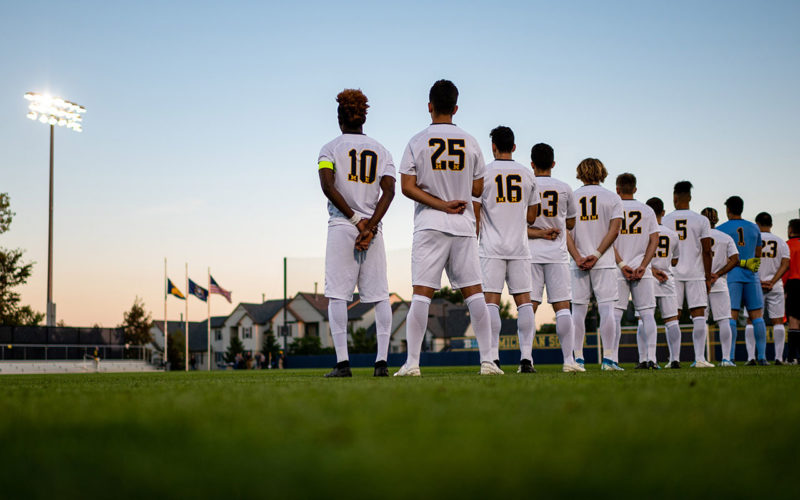
American College sport is a big deal. At the most elite end of the spectrum, some of the best athletes on the planet develop their talents before moving on to become professionals. However, College sport offers so many more opportunities to thousands of other sportsmen/women who may not be in the “top 1%” in their field.
Many prospective College athletes have heard about or researched certain schools prior to beginning the recruitment process. If you have done so, you’ll no doubt have read about the different divisions and organisations that Colleges are affiliated to. Here, we’ll try to explain the similarities and differences of each division so that you know what you’re reading about in future.

College Football game at the University of Colorado, Boulder
National Collegiate Athletic Association (NCAA)
The NCAA is arguably the largest governing body in US College sports. It oversees 1,092 universities and all of their respective sports teams. To put that in perspective, they are responsible for the eligibility and welfare of more than 480,000 student-athletes per year!
With such a large number under their governance, NCAA member schools are categorised into one of three separate divisions:
NCAA Division 1
A total of 346 universities fall into the ‘D1’ classification. There is no universal attribute that a D1 school possesses. However, they tend to have the following factors in common:
- (Mostly) larger Colleges with student populations of between 10,000 and 67,000! Check out this University of Central Florida campus tour!
- All Colleges have the ability to offer athletic scholarship, in addition to academic scholarship and other forms of financial aid.
- D1 schools, for the most part, have more scholarship funding available than schools in other divisions. However, the level that student-athletes are required to be at in order to obtain that funding is often higher.
Some D1 sports are known as “Head-Count” sports, meaning that they can either give athletes a full-scholarship (“full-ride”) or nothing at all. American Football, Men’s & Women’s Basketball, Women’s Volleyball, Women’s Tennis and Women’s Gymnastics all fall into this category.
For all other sports, such as Soccer, Track & Field, Swimming, Golf, etc., the “Partial Scholarship Model” applies. In essence, this enables coaches to offer recruits full athletic scholarships or part-athletic scholarships. If offered a partial athletic scholarship, a student-athlete can still receive further scholarship funding from the university in the form of Academic aid. Read more about this on our previous blog – Scholarship Offers – 5 Tips on Maximising Your Options

Athleticademix client, Julia Edholm, in action for the University of Arkansas at Little Rock
NCAA Division 2
It’s worth pointing out that there is no promotion or relegation between divisions. D1 or D2 schools will, for the most part, always remain in their respective categories. NCAA D2 is comprised of 307 member institutions all over the US. Generally speaking, these themes are most applicable to D2 Colleges:
- Smaller schools with between 1,000 – 12,000 students on campus. As an example, take a look at the Nova Southeastern University campus!
- All Colleges have the ability to offer athletic scholarship, in addition to academic scholarship and other forms of financial aid. However, they all follow the “Partial Scholarship Model”, meaning that student-athletes will likely need to combine multiple types of scholarship funding to maximise their overall financial package.
- While D1 is often thought of as the highest level of College sports, it’s not always that straight forward. D2 programs are often stronger than many of their D1 counterparts in certain sports. So don’t get too hung up on the divisions, focus on what school is right for you!
NCAA Division 3
A whopping 439 schools belong to NCAA D3! These universities usually boast strong academics, but are a little more limited on what they can offer financially in comparison to D1 and D2. Here’s an overview of D3:
- Smaller schools with between 1,000 – 12,000 students on campus. Take a look at the beautiful Emory University campus in Atlanta, Georgia!
- D3 Colleges cannot offer any athletic scholarship funding. However, coaches are able to help student-athletes capitalise on the generous Academic scholarship and other financial aid opportunities available.

College Swimmer
National Association of Intercollegiate Athletics (NAIA)
Moving away from the NCAA, another governing body within US College sports is the NAIA. They are completely separate to the NCAA but do very much the same kind of thing in terms of organising and supporting member universities and their athletes.
The NAIA consists of 251 schools, two of which are based in Canada and one in the US Virgin Islands, with the rest all located in America. There’s no divisions as such in the NAIA. Colleges compete within their respective regional conferences before moving on to the National Tournament. It would be fair to compare many NAIA Colleges with those in NCAA D2. In terms of size, most NAIA schools have a student population of 1,000 – 12,000, which is considered a small school in the US.
It is possible to receive both athletic and academic scholarship funding as an NAIA student-athlete. They also adopt the “Partial Scholarship Model” and it is rare that an athlete will receive a full-ride from just their sport alone. When academic scholarship is added to the athletic funding, the potential for a larger/full scholarship increases. As always, it depends on the individual’s athletic ability and academic standing as to what they’ll receive.

College Soccer players lined up and ready to go
National Junior College Athletic Association (NJCAA)
This one is a little different from the rest. The NJCAA is commonly referred to as “Junior College” – which is abbreviated to “JUCO” and has 525 member schools!
Colleges that fall into this category are 2-year institutions. Therefore, a student-athlete that competes at a JUCO school will only be there for a maximum of two years. After that, if their talent and their grades allow, they may move on to compete in the NCAA or NAIA and finish the 4-year degree process.
The reasons for why an individual may enrol at a JUCO instead of a 4-year school include, but are not limited to:
- They have missed the time frame available to compete in the NCAA D1, D2 or NAIA (up to one year after completing full-time education in your home country). Read up on Requirements to Become a College Athlete!
- Their school grades and/or SAT/ACT grades do not meet the eligibility standards for D1, D2 or NAIA.
- They may have started the College search process very late, meaning that options are limited.
- JUCO schools can often be cheaper than 4-year universities, therefore proving to be a more affordable option to begin with.
- A JUCO may be a more appealing offer to a student-athlete when compared to a 4-year school. This could be as a result of the coaching staff, finances, location, level of competition, track record, etc.
Conclusion
So, now you have a little more knowledge about what the different divisions and organisations mean and what they offer. The most important message to take from this is to assess each College option on its own individual merit.
Athleticademix will assess your athletic and academic levels and give you honest and accurate feedback on what we feel you can realistically expect in the US. But we’ll always keep every option on the table for you to consider and compare.
There’s so many factors to take into account when searching for the right university. Our job is to help set you on the right pathway and condense the list down from +1,700 schools to a more realistic and manageable shortlist tailored to you. So, what are you waiting for? Let’s talk about you and your potential options…
Thanks for reading! Please feel free to share if you know someone who’d benefit from this blog post! 🙂
TEAM ATHLETICADEMIX



